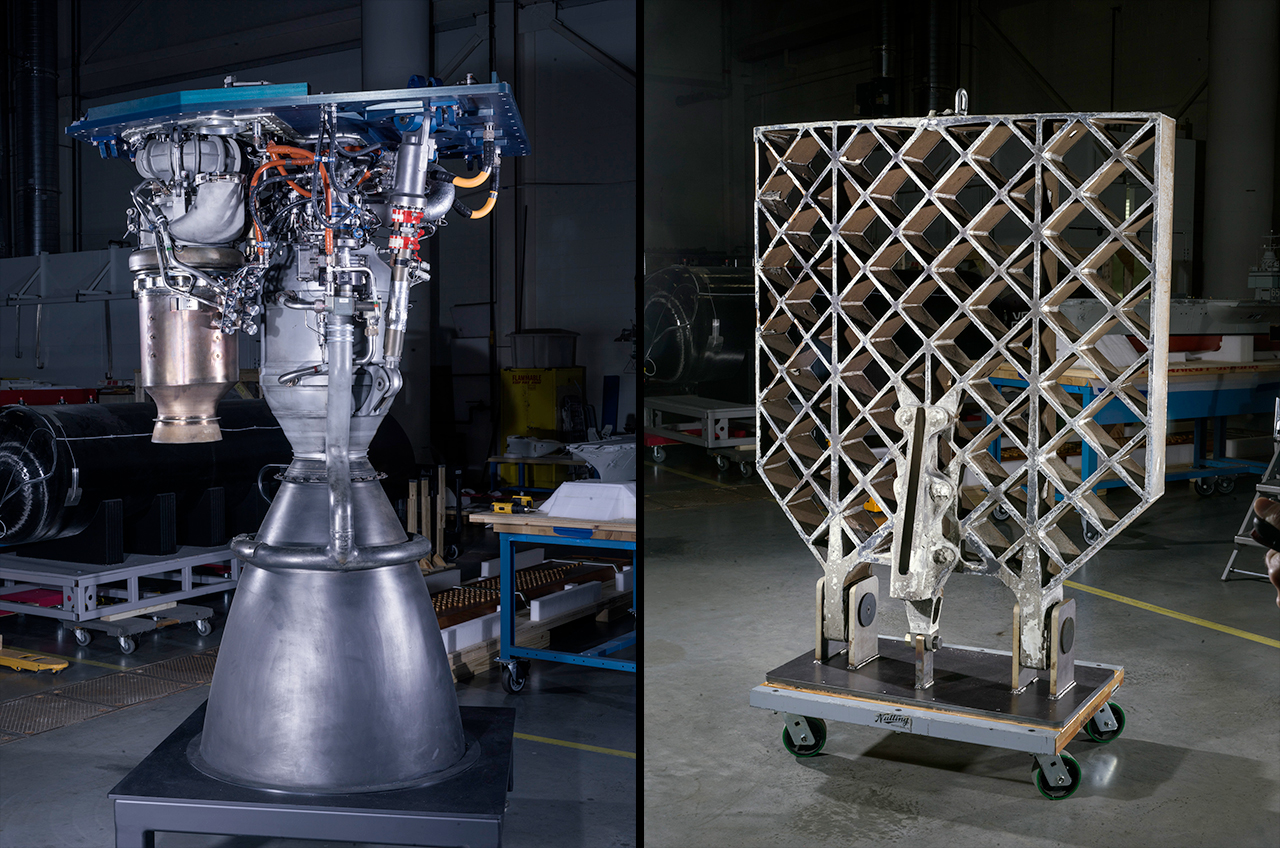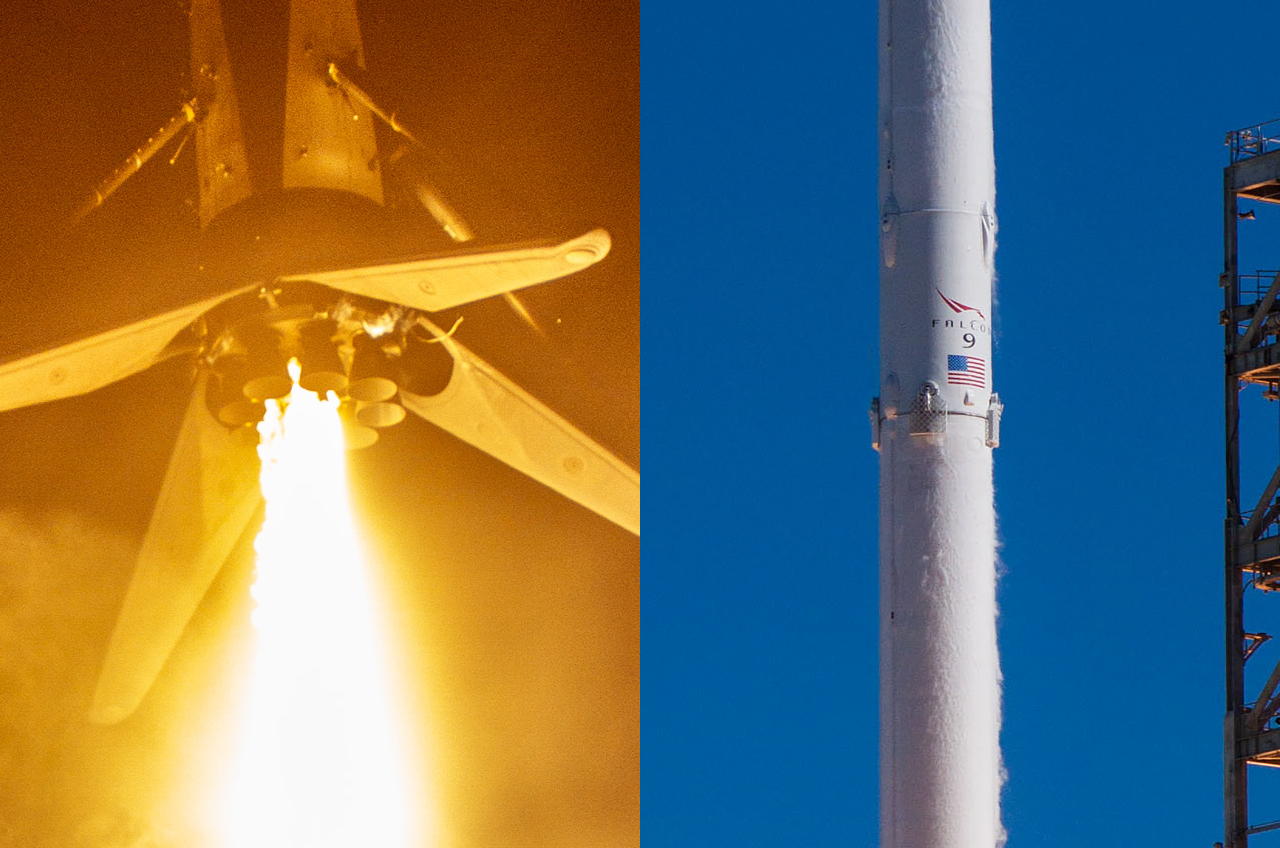SpaceX flight-proven rocket hardware to go on display at Smithsonian
The Merlin engine and grid fin will go on display at the National Air and Space Museum.

A SpaceX rocket engine that was used in the launch of an Israeli company's first attempt at landing on the moon has now, itself, landed in the Smithsonian. It is one of the first examples of SpaceX hardware to represent the U.S. commercial spaceflight company in the national collection.
The Merlin engine and a grid fin were donated by SpaceX to the National Air and Space Museum in Washington, D.C.
"Two new artifacts from SpaceX's Falcon rocket have joined our collection," the National Air and Space Museum posted to its social media channels. "The engine and grid fin will join artifacts from other spaceflight companies on display in an upcoming exhibition that will explore the future of spaceflight."
Related: 8 ways that SpaceX has transformed spaceflight
In addition to the 2019 launch of SpaceIL's "Beresheet" moon lander, which entered lunar orbit but crashed into the moon's surface, the donated Merlin engine was one of nine that flew on the first stages of two other Falcon 9 rockets.
In 2018, it was launched twice from Vandenberg Air Force Base (today Space Force Base) in California, helping to loft commercial communications satellites (Iridium-6) and an Argentinian Earth-observation satellite (SAOCOM 1A). The latter stage was the first to land on terra firma on the U.S. West Coast, as opposed to using one of SpaceX's ocean-going droneships.
The Beresheet moon lander was launched from Cape Canaveral Air Force Station (today Space Force Station) in Florida along with an Indonesian communications satellite (PSN VI). Designed for recovery and reuse, SpaceX's Merlin engines use a rocket grade kerosene (RP-1) and liquid oxygen as propellants in a gas-generator power cycle.

The aluminum grid fin flew only once, lifting off in 2017 from Pad 39A at NASA's Kennedy Space Center in Florida with a South Korean satellite (Koreasat 5A). Each Falcon 9 interstage is equipped with four hypersonic grid fins that are used to orient the rocket during reentry by moving the center of pressure.
The donated grid fin helped deliver SpaceX its 19th recovered first stage and 15th in a row. The company surpassed its 200th Falcon 9 landing this year.
The National Air and Space Museum is currently undergoing a $900-million, building-wide renovation, which began in 2018 and is expected to be completed in 2026. In October 2022, the museum debuted eight of its new galleries, including "Destination Moon," which chronicles how astronauts came to walk on the moon.
The SpaceX artifacts will go on public display when the museum reopens its east wing, where the galleries "Space Race" (now being transformed into the "Raytheon Technologies Living in the Space Age" exhibition) and "Moving Beyond Earth" (that had only a scale model of a Falcon 9 rocket to represent SpaceX) were previously on display.
The Smithsonian is the latest institution to announce or debut donations from SpaceX. The company earlier placed complete Falcon stages at Space Center Houston in Texas and the Kennedy Space Center Visitor Complex in Florida, in addition to standing one up outside of its headquarters in Hawthorne, California. The company also has first-generation Dragon capsules on display at Kennedy and at the Museum of Science and Industry in Chicago.
Follow collectSPACE.com on Facebook and on Twitter at @collectSPACE. Copyright 2023 collectSPACE.com. All rights reserved.
Get the Space.com Newsletter
Breaking space news, the latest updates on rocket launches, skywatching events and more!
Join our Space Forums to keep talking space on the latest missions, night sky and more! And if you have a news tip, correction or comment, let us know at: community@space.com.

Robert Pearlman is a space historian, journalist and the founder and editor of collectSPACE.com, a daily news publication and community devoted to space history with a particular focus on how and where space exploration intersects with pop culture. Pearlman is also a contributing writer for Space.com and co-author of "Space Stations: The Art, Science, and Reality of Working in Space” published by Smithsonian Books in 2018.In 2009, he was inducted into the U.S. Space Camp Hall of Fame in Huntsville, Alabama. In 2021, he was honored by the American Astronautical Society with the Ordway Award for Sustained Excellence in Spaceflight History. In 2023, the National Space Club Florida Committee recognized Pearlman with the Kolcum News and Communications Award for excellence in telling the space story along the Space Coast and throughout the world.










